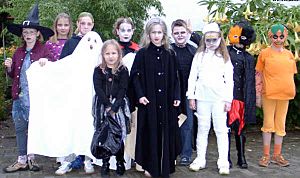Dress-up facts for kids
Dress-up is a fun game where you put on different clothes or costumes. You can dress yourself, your friends, or even your dolls! It's all about pretending to be someone else, like a superhero, a princess, or an animal. Sometimes, it's just about making something look pretty. In recent years, dress-up games have also become popular video games where you get to customize how your virtual characters look.
Contents
Dressing Up Paper Dolls
Have you ever played with paper dolls? These are flat dolls made of paper that you can dress up with different paper outfits. People have been playing with paper dolls since the mid-1700s! They became very popular all over the world because they were cheap to make but still offered lots of fun dress-up possibilities. You could find them in books, newspapers, and magazines.
Virtual Dress-Up Games
As computers and the internet grew, so did dress-up games!
Early Online Dolls
In the late 1990s, people started making online dress-up games. You could drag and drop virtual clothes onto a doll-like image on your computer screen. One of the first popular virtual dress-up games was called Kisekae System Sets (KiSS), which came from Japan. These games had a cartoon-style model and a small collection of clothes.
After that came "Dollz." These were tiny pictures made of pixels (small dots of color) that looked like little dolls. You could find them scattered on websites and drag them onto other pixel dolls to dress them up. Dollz were often created by drawing hair, clothes, and accessories onto a basic doll body. Many teenagers used Dollz as their online pictures, called "avatars," to show off their creativity.
Flash Games Take Over
Around 2007, dress-up games changed a lot with the arrival of a technology called Adobe Flash. Flash made it much easier for artists to create simple online games. This meant many more people could make dress-up games, and lots of new games and websites appeared. It became a huge trend, and soon there were tons of dress-up game websites to choose from!
Modern Doll Makers
In the late 2010s, some dedicated fans of dress-up games used Adobe Flash to create even more advanced games. These new games, often called "doll makers," let you completely customize your character. You could choose from tons of hairstyles and clothing options, making the games fun to play for a long time. These games also started to feature characters and themes from popular movies, TV shows, and fantasy worlds, going beyond just typical fashion.


